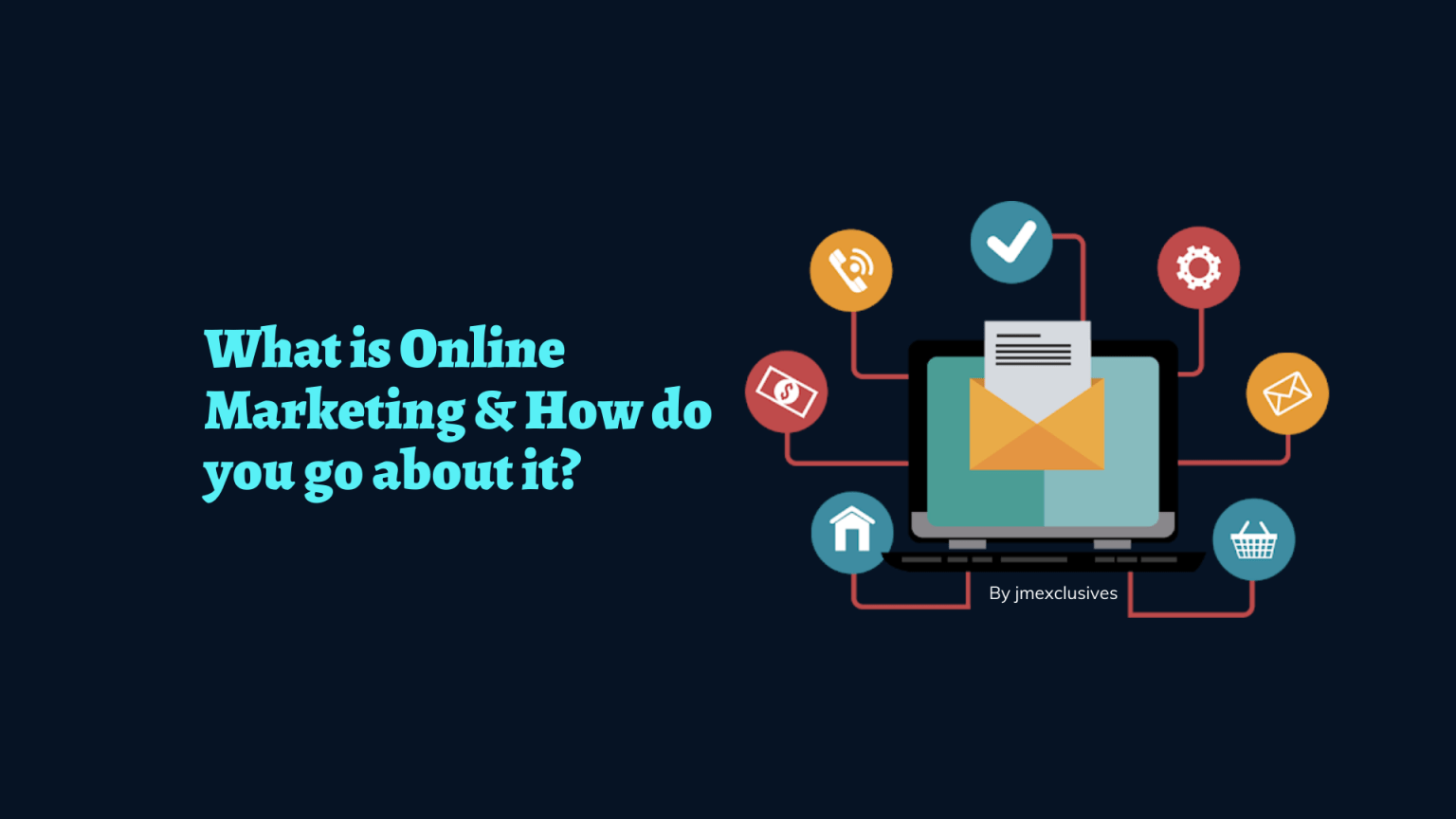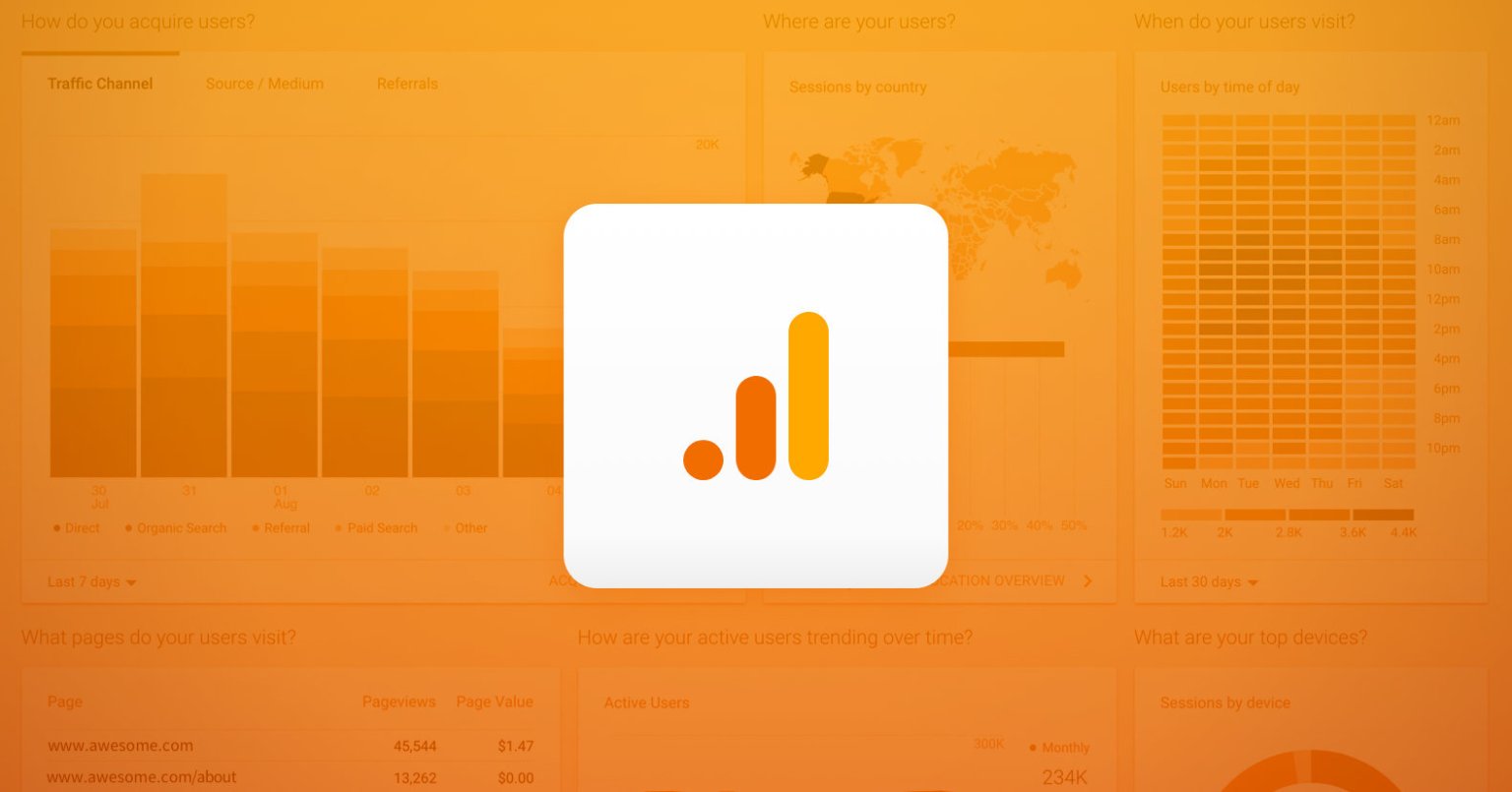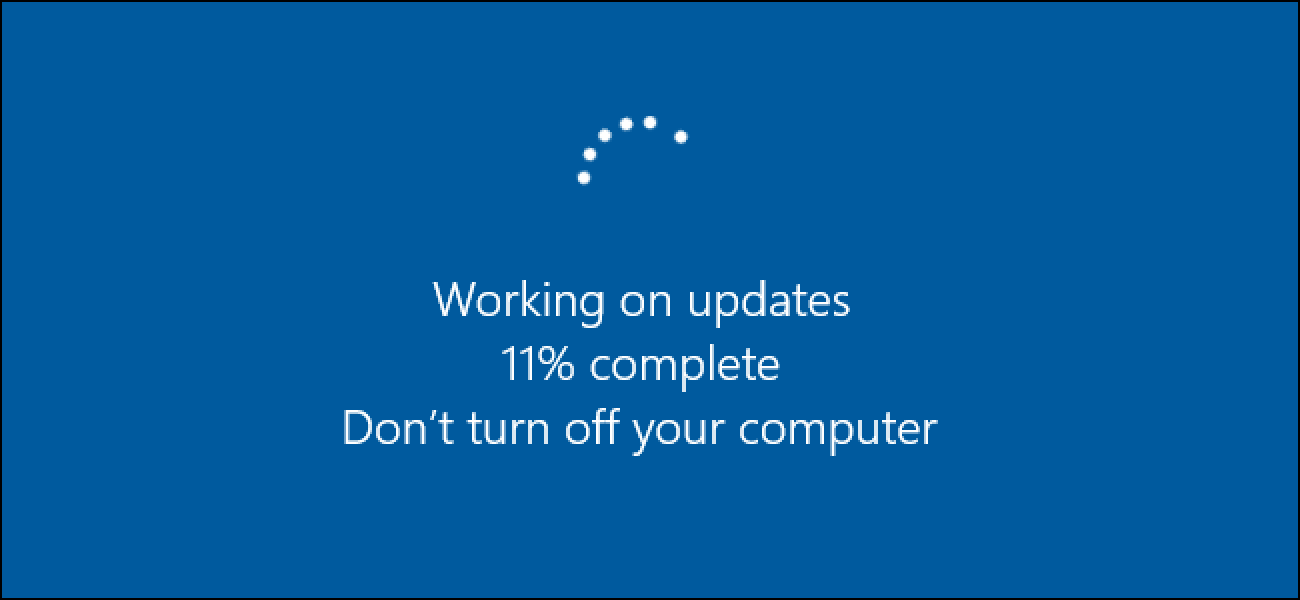What Is Online Marketing?
Online Marketing has been in use for quite some time now. Especially, for marketing businesses, brands, products, or services using digital technologies on the internet. As well as, through mobile phone apps, display advertising, and any other digital mediums.
By the same token, digital marketing channels are systems based on the internet that can create, accelerate, and transmit product value. From producers to a consumer terminal, through digital networks. Not forgetting, as of today, digital marketing moves at the speed of light.
And to keep up, you need a strong foundation with the judgment to think critically, act independently, and be relentlessly creative.
For instance, an online business (like jmexclusives) leverage on various digital channels. Such as Google Search Console, social media, email, and its website for various reasons. Like to connect with their current and prospective customers.
And that’s why I wrote this blog guide. By all means, to empower you with the mental building blocks to stay ahead in the ever-growing and aggressive industry. Not to mention, in order to grow, your digital marketing plan requires lead marketers and brand affiliates (like jmexclusives).
Read Also: Marketing Leads: How Do You Generate Conversions
Of course, these are persons who show your brand reputation or products and services to potential customers, clients, and even online buyers. In the end, converting or making the persons of interest to potential customers. And not forgetting, the primary goal of any company is to generate as many leads online as possible.
While at the same time, content marketing has now evolved out as the simplest way to get more and more marketing leads online. In that case, without putting pressure on the company’s owner and treasury department. And eventually, guiding them down the sales funnel with relevant content and offers towards the purchase.
What Is Online Marketing?
To enumerate, Online Marketing is the process of marketing brands, products, services, or solutions using digital technologies. Such as on the Internet, but also including mobile phones, display advertising, and any other digital medium.
In reality, people spend twice as much time online as they used to 15 years ago. And while you say it a lot, the way people shop and buy really has changed. Meaning offline marketing isn’t as effective as it used to be. So, Marketing has always been about connecting with your audience in the right place and at the right time.
Today, that means that you need to meet them where they are already spending time. This is where digital marketing on the internet falls in. Actually, after the penetration of the internet in human life, everyone spends around 8 to 11 hours daily on the computer.
Well, during this period, they also read several things online and get motivated to purchase from e-commerce portals too.
Why Is Online Marketing Useful?
In the first place, Do you know who Neil Patel is? Yes! Of course, if you’re an online marketing expert (like jmexclusives agency), you probably do.
But, if you’re part of the other 99.9% of the world who isn’t super excited about this “Internet marketing stuff,” you’ve probably never heard of this man.
Let me explain, Neil Patel is the co-founder of NP Digital and Subscribers. After all, the Wall Street Journal calls him a top influencer on the web. While at the same time, Forbes Magazine says he is one of the top 10 marketers. And even Entrepreneur Magazine says he created one of the 100 most brilliant companies.
In addition, Neil is a New York Times bestselling author and was recognized as a top 100 entrepreneur under the age of 30 by President Obama. As well as a top 100 entrepreneur under the age of 35 by the United Nations.
Why am I telling you all that? You’re wondering I guess! Simply, because all this is not in vain as he is one of the best online digital marketers through his neilpatel.com channels. You can go ahead to read and learn more about Neil Patel.
How Is Online Marketing Done?
Basically, the methods and techniques used for online marketing include email, social media, display advertising, search engine optimization, and more.
The objective of marketing is to reach potential customers through the channels where they spend time reading, searching, shopping, or socializing online.
Always remember, the jmexclusives team offers your brand unique online digital marketing services and solutions support. Bearing in mind, marketing is, and always has been, about reaching customers where they are.
For instance, TV commercials, print advertisements, and billboards all attempt to do just that. Whereby, internet use is increasing worldwide and in a superspeed every day. In fact, over four billion people around the world use the internet, as of 2018.
Below, is a quick rundown of some of the most common assets and tactics used by the jmexclusives. But, first, it is important that you consider your;
1. Business or Brand Assets
These include;
- Your website
- Blog posts
- Ebooks and whitepapers
- Infographics
- Interactive tools
- Social media channels (Facebook, LinkedIn, Twitter, Instagram, etc.)
- Earned online coverage (PR, social media, and reviews)
- Online brochures and lookbooks
- Branding assets (logos, fonts, etc.)
2. Affiliate Marketing Plugins
WordPress Affiliate Marketing Plugins has various elements you’ll use in order to make more money. And in general, the WordPress Affiliate Marketing Plugins allows an easy to use WordPress Platform for affiliate recruitment, management, and tracking.
After all, these Affiliate Plugins can be used on any WordPress blog or site. These plugins let you run your own affiliate campaign/program and allows you to reward (pay commission) your affiliates for referring sales.
Read More: WordPress Affiliate Marketing Plugins Beginners Guide
Notably, the admin can configure banners, links, and creatives. And which the affiliates can use on their site to drive traffic to your site. All the clicks, leads, sales, etc are tracked by this plugin.
The internet offers unique benefits other marketing mediums can’t offer. Including, the scope of reach, the option to personalize content, and the opportunity to build far-reaching relationships with customers, being just a few.
Below are more simplified and preferred online digital marketing techniques;
BASICS:
- Search Engine Optimization (SEO): Search Engine Optimization is the process of optimizing your website to ‘rank’ higher in search engine results pages. And therefore, increasing the amount of organic (or free) traffic that your website receives.
- Content Marketing: Content Marketing is the creation and promotion of content assets for the purpose of generating brand awareness, traffic growth, lead generation, or customers.
- Inbound Marketing: Inbound Marketing refers to the ‘full-funnel’ approach to attracting, converting, closing, and delighting customers using online content.
- Social Media Marketing: Social Media Marketing is the practice of promoting your brand and your content on social media channels to increase brand awareness, drive traffic, and generate leads for your business.
- Affiliate Marketing: Affiliate Marketing is a type of performance-based advertising where you receive a commission for promoting someone else’s products or services on your website.
- Native Display Advertising: Display Advertising refers to advertisements that are primarily content-led and featured on a platform alongside other, non-paid content. BuzzFeed sponsored posts are a good example, but many people also consider social media advertising to be ‘native’ — for example, Facebook advertising and Instagram advertising.
ADVANCED:
- Pay-Per-Click (PPC): Pay Per Click is a method of driving traffic to your website by paying a publisher every time your ad is clicked. One of the most common types of PPC is Google AdWords.
- Marketing Automation: Marketing Automation refers to the software that exists with the goal of automating marketing actions. Many marketing departments have to automate repetitive tasks such as emails, social media, and other website actions.
- Email Marketing: Companies use Email Marketing as a way of communicating with their audiences. Email is often used to promote content, discounts, and events, as well as to direct people towards the business’ website.
- Online PR & Analytics: Online PR is the practice of securing earned online coverage with digital publications, blogs, and other content-based websites. It’s much like traditional PR but in the online space.
How is Inbound & Outbound Marketing done?
Online digital marketing is simply an umbrella term to describe all-inclusive internet marketing tactics of any kind. And regardless of whether they’re considered inbound marketing or outbound marketing. But, on the surface, they all seem similar.
Simply, because they all occur primarily online and focuses on creating digital content for people to consume. So what’s the difference? The term ‘online marketing’ doesn’t differentiate between push and pull marketing tactics. Or what we might now refer to as ‘inbound marketing’ and ‘outbound marketing’ methods.
But, both can still fall under the umbrella of online digital marketing. How do you do that? You attract prospects and customers to your website and blog through relevant and helpful content. Once they arrive, you engage with them using conversational tools like email and chat and by promising continued value.
Finally, you delight them by continuing to act as an empathetic advisor and expert. Below is a more elaborate difference between outbound and inbound marketing;
1. Digital Outbound Marketing Tactics
Often, digital outbound tactics aim to put a marketing message directly in front of as many people as possible in the online space.
Also, regardless of whether it’s relevant or welcomed. For example, the garish banner ads you see at the top of many websites try to push a product or promotion onto people who aren’t necessarily ready to receive it.
2. Digital Inbound Marketing Tactics
On the other hand, marketers who employ digital inbound tactics use online content to attract their target customers. Especially onto their websites by providing assets that are helpful to them. One of the simplest yet most powerful inbound digital marketing assets is a blog.
This allows your website to capitalize on the terms which your ideal customers are searching for. Ultimately, inbound marketing is a methodology that uses digital marketing assets to attract, convert, close, and delight customers online.
Read More: General Inbound Marketing Explained Guide
Generally speaking, inbound marketing is about creating valuable experiences that have a positive impact on people and your business. Widespread adoption of the Internet for business and personal use has generated many new channels. Especially those used for advertising and marketing engagement, including those mentioned above.
There are also many benefits and challenges inherent in online marketing, which uses primarily digital mediums to attract, engage, and convert virtual visitors to customers. Online marketing differs from traditional marketing, which has historically included mediums like print, billboard, television, and radio advertisements.
What are Examples of Online Marketing?
Before online marketing channels emerged, the cost to market products or services was often prohibitively expensive, and traditionally difficult to measure. Think of national television ad campaigns, which are measured through consumer focus groups to determine levels of brand awareness.
These methods are also not well-suited to controlled experimentation. Today, anyone with an online business (as well as most offline businesses) can participate in online marketing. By creating a website and building customer acquisition campaigns at little to no cost.
Those marketing products and services also have the ability to experiment with optimization to fine-tune their campaigns’ efficiency and ROI.
Examples of online marketing campaigns include:
- Canon advertises for search keywords related to “photography” on Google, Yahoo, and Bing search engines to market their cameras to a relevant audience.
- Whole Foods collects email addresses on their website to advertise new products, sales, and events in their stores.
- Dove creates video advertisements and shares them with their audience on Facebook, Twitter, and other social networks to promote favorable conversation about their brand and products.
Although online marketing creates many opportunities for businesses to grow their presence via the Internet and build their audiences, there are also inherent challenges with these methods of marketing.
Which are the Best Practices for Online Marketing?
Your online digital marketing is affiliated with all your internet availability. A long-lasting reputation, presence, and awareness you’ll create to your target audience and niche. From your website itself to your online branding assets; digital advertising, email marketing, online brochures, and beyond.
Furthermore, there’s a huge spectrum of tactics and assets that fall under the umbrella of online digital marketing. Additionally, the best online digital marketers have a clear picture of how each asset or tactic supports their overarching goals.
Read Also: Email Marketing Masters Guide In Publishing
Basically, Online Marketing encompasses all marketing efforts that use an electronic device or the internet. Businesses leverage digital channels such as search engines, social media, email, and websites to connect with current and prospective customers.
And eventually, Online Digital Media is so pervasive that consumers have access to information anytime and any place they want it. For instance, gone are the days when the messages people got about your products or services came from you and consisted of only what you wanted them to know.
Digital Media is an ever-growing source of entertainment, news, shopping, and social interaction. In addition, consumers are now exposed not just to what your company says about your brand, but what the media, friends, relatives, peers, etc., are saying as well.
And they are more likely to believe them than you. People want brands they can trust, companies that know them, communications that are personalized and relevant, and offers tailored to their needs and preferences.
A Quick Summary,
In reality, marketing can become impersonal, due to the virtual nature of the message and content delivery to the desired audience. Marketers must inform their strategy for online marketing with a strong understanding of their customer’s needs and preferences.
Techniques like surveys, user testing, and in-person conversations can be used for this purpose. Online digital marketing is undergoing crowd siege and is highly competitive.
Although the opportunities to provide goods and services in both local and far-reaching markets are empowering, the competition can be significant. Companies investing in online marketing may find visitors’ attention is difficult to capture.
Due to, either the number of businesses also marketing their products or services online. Marketers must, therefore, develop a balance of building a unique value proposition. And also, a profound brand voice as they test and build marketing campaigns on various channels.
Resources;
I hope you’ve enjoyed reading and have understood some of the main Online Digital Marketing & Lead Generation Tactics.
But, if you’ll have additional contributions, suggestions, or even questions, please feel free to Contact Us. By the same token, you can share your thoughts with other readers in the comments box below this article.
Finally, below are more useful links related to the topic above.





Comments
Post a Comment